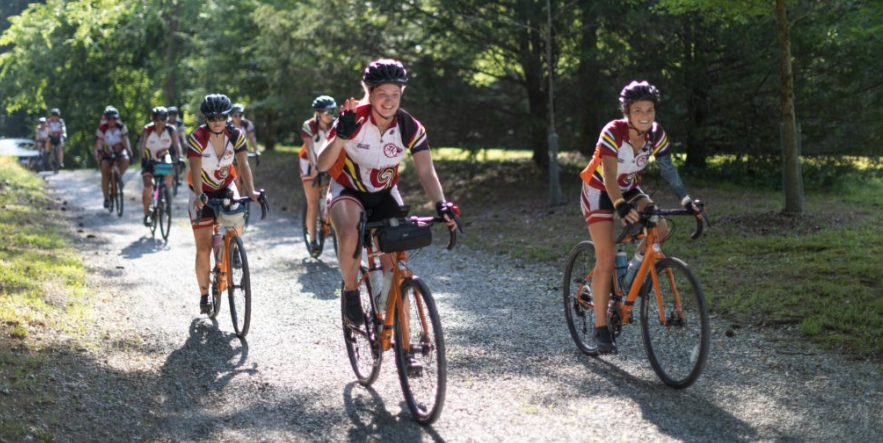Remember the Removal: Indigenous Cyclists Take On 950-Mile Ride Retracing the Trail of Tears

Now in its 15th year, the Remember the Removal Ride continues to help young members of the Cherokee Nation reclaim what was lost when the federal government removed indigenous people from the land. The ride honors the thousands of people who died during the Trail of Tears ethnic cleansing and forced displacement.
Beginning in the 1830s, and for decades after, the U.S. government “death marched” at least 60,000 people. The violent removal involved those from the Cherokee, Muscogee (Creek), Seminole, Chickasaw, Ponca, Ho-Chunk, and Choctaw nations. The damage caused was overwhelming and ongoing.
But it wasn’t absolute. Today the Cherokee Nation finds strength in many things, and one of them is cycling. The Remember the Removal Ride began in 1984 as a way for Cherokee youth to gain an understanding of the distance and the loss that their ancestors endured. Then the 950-mile ride evolved into an annual tradition in 2009. PBS reported on this year’s ride, featuring the story of Amaiya Bearpaw, a 22-year-old making the trek.
“We are able to be with our ancestors and see what they went through and the perseverance they showed,” Bearpaw said. “When we get back home, we can share with others how we can still walk this route and ride this route and through that we are able to keep their memories alive.”
For the second year in a row, this year’s team is entirely young women. The riders include Bearpaw, Faith Springwater, 19; Mattie Berry, 18; Kenzie Snell, 19; Samantha Cavin, 18; and mentor cyclist Libby Neugin, 40. PBS reports that the training for the ride took more than six months. The team slowly built their endurance so that they could ride an average of 60-miles per day.
We’re back on the road for day 7 of the 𝙍𝙚𝙢𝙚𝙢𝙗𝙚𝙧 𝙩𝙝𝙚 𝙍𝙚𝙢𝙤𝙫𝙖𝙡 𝘽𝙞𝙠𝙚 𝙍𝙞𝙙𝙚. 🚲✨
Here is a behind the scenes look before we rolled out of Princeton, Kentucky, this morning. Today will be a near 42-mile day along the northern route of the Trail of Tears. ❤️ pic.twitter.com/OoPFAFO0VY— Cherokee Nation (@CherokeeNation) June 11, 2023
The journey is especially significant to mentor and leader of the ride, Libby Neugin, as her great-grandmother, Rebecca Neugin, was one of the last known survivors of the Trail of Tears. This year’s ride will be Neugin’s first visit to her ancestral homeland, according to PBS.
“It just blows my mind about how strong our Cherokee ancestors were,” Neugin said. “Being taken from your home, losing everything that you had and leaving your homeland and not knowing where you’re going and to just be so strong and resilient. It’s just powerful, and I want to be that strong.”
[editoriallinks id= '85363d07-35f3-4fa8-a57b-724b505f7b99' align= 'center'][/editoriallinks
You Might Also Like
